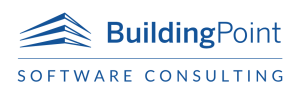More often than not, the success of a particular construction project is determined by how well project leaders deal with risks. Risks are inherent in every business—and it’s obvious that they carry a dollar value—just look at the insurance industry. Contractors who are able to understand the risk factors in their business, and can work to mitigate these risks, are in a position not unlike insurance companies. By assuming more of the risk for the projects that they are involved with, contractors can take the burden of risk off of owners or subcontractors and charge a premium for doing so. Even if this doesn’t become an actual source of profit in and of itself, contractors who work actively to understand and control risk are in a position to make smarter project decisions which can lead to higher profit margins.
Identifying Risks
Obviously, you will need to identify all the potential risks that could arise over the course of the project. Make sure to review the bidding documents, plans, equipment, inventory, and specifications for the project carefully. Look for risks high and low. Risks that contractors often deal with include incomplete documents, unreliable site conditions, fluctuating project timelines, accelerated deadlines, safety measures, unexpected increases in material costs, and unreliable equipment.
How does one track and understand risks for a particular project?
An effective construction management software, like Spectrum® Construction Software from Dexter + Chaney, will help you assess the risks involved with your project by enabling you to track everything. Equipment and materials, purchasing & inventory, HR and Payroll, reporting, and the project’s overall lifecycle are all easily managed from anywhere via the cloud, providing you with a snapshot of your project’s risks and the ways you and your team can mitigate them.
Mitigating Risks
Managing risks heavily depends on the proper allocation of risk. In any construction job, there exists a number of parties responsible for different working aspects of the project. It’s in the interest of the project’s overall success that the most appropriate parties manage certain risks—i.e. the owner is responsible for design flaws and hang-ups, as they typically handle these contracts and are in a much better position to deal with those folks. Conversely, the contractor should assume responsibility for job site safety and any property/equipment damage that occurs during operations, since the contractor’s central role is to manage the job site.
Leveraging Construction Management Software to Mitigate Risks
Ultimately, mitigating the risks involved in construction projects comes down to successful management, and successful management depends on the provision of relevant information as well as the proper allocation of responsibilities. Construction Software like Spectrum brings together everyone involved—in the office or the field, inside or outside the organization, vendors, subcontractors and more—under one collaborative umbrella, ensuring that the most up-to-date data gets in the hands of the people who need it when they need it. If participants are able to see the status of the project and understand their current responsibilities, risks are dealt with promptly, and potential risks are identifiable long before they ever become a problem.
Mitigating risks can provide a competitive advantage over your peers. The better prepared for them you are, and the more streamlined your processes are when risks do factor into project’s workflows, budgets and timelines, then the better suited you will be to overcoming these risks. Eventually, your ability to effectively deal with common project risks can lead to your company’s ability to take on even larger risks that other companies might not be able to handle—placing your company in a position to take on more challenging—and profitable—work.
When Should You Begin Determining Project Risks?
The simple answer is as soon as humanly possible. One of the best practices is to incorporate risk analysis into your project bids. Not only will this help you manage and mitigate potential risks down the line, but it can also help you determine a more accurate pricing breakdown, and can help you secure more work.
Putting together a successful bid can take a lot of time. It involves reviewing and understanding the plans and project specifications in order to estimate costs of labor, materials equipment, project timelines, and constraints accurately. Even the smallest misstep in a bid can cost you, which is why leveraging construction management software, across all stages of the project, is of the utmost importance.
Using a platform like Spectrum can provide you with significantly more insightful job costing, reporting and streamlined project management, giving your company a better idea of the scope of work for different projects. This too can give you a competitive advantage, as your bids will be more accurate based on both project experience and solid projections. Owners will feel more comfortable with your company’s abilities and you’ll reap the rewards of more work and larger bid packages.
Remember, risks are inherent to every construction project, but there’s no reason you can’t use them to your advantage. If you’re interested in how Spectrum can help you mitigate risks and win your firm more work, get in touch today!

